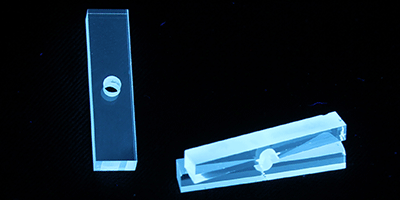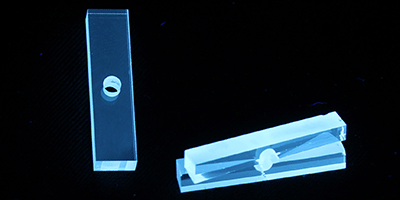Son et Lumière
The quest for ultra-rare particle events routinely demands the most rigorous exclusion of background noise and spurious signals in detectors. Some dark matter searches, for example, rely on a combination of phonon and photon generation in high quality scintillator crystals. Usually the background problem is radioactivity in nearby materials, but other sources can contribute and are even more vexing to eradicate. As Alexis Tantot of Queen’s University, Canada, and colleagues report in Physical Review Letters, sound and light emission from mechanical stresses and fracture in scintillator crystals can cause more background than expected.
Scintillators generate light when an energetic particle hits them, which is then recorded by an optical detector. The authors placed samples of three of the most widely used scintillator materials—bismuth germanate, zinc tungstate, and cadmium tungstate—in a device that compressed the crystals to the breaking point. With this setup, they measured acoustic emission with a piezoelectric transducer and light generation with a photomultiplier. The data collected represented the first systematic study of light and acoustic mechanisms in such crystals.
The data reveal a strong correlation between mechanically produced photon and phonon emission, indicating a common origin. And by exciting the crystals with x rays, the energy emission during fracture can be quantified. Materials scientists and particle physicists can benefit from the experiment: combined light and acoustic measurements might offer new ways to explore fracture mechanisms, and experimentalists looking for exotic physics phenomena have a better handle on a potentially crucial source of background. – David Voss





